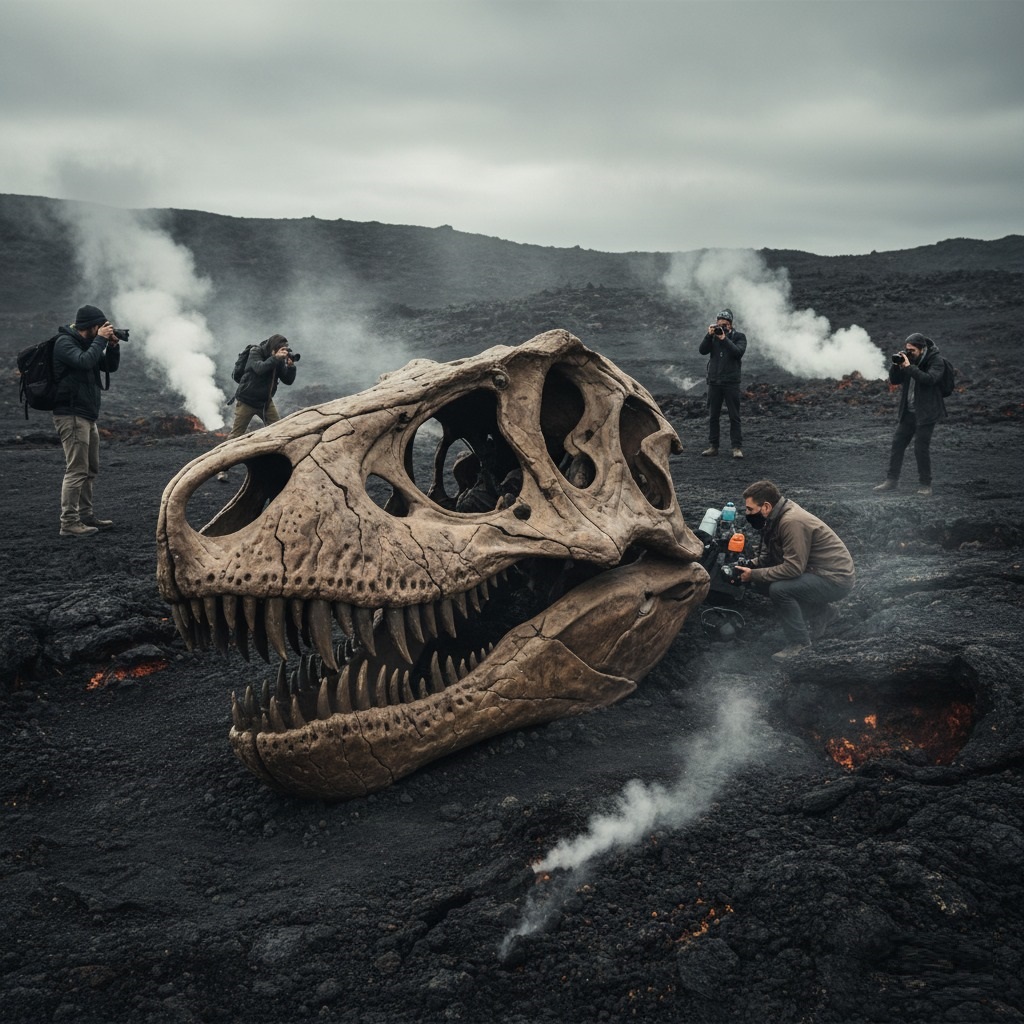Unearthing Giants: The Fossilized Remains of a Megafauna in Iceland’s Volcanic Highlands

The year is 2077. Climate shifts have long exposed new archaeological frontiers, and none more dramatic than the ever-changing volcanic landscape of Iceland’s interior. Dr. Aris Thorne, a paleontologist whose career had spanned forgotten deserts and sub-aquatic trenches, felt the familiar sting of the sulfurous air on his skin as his team navigated the obsidian fields near Askja. This was no ordinary dig; satellite lidar scans had picked up an anomaly, a signature too large to be geological, too structured to be natural.
Weeks of meticulous excavation had culminated in this moment. Beneath a shroud of volcanic ash, now perpetually stirred by geothermal vents, lay the colossal skull of what they had tentatively classified as Megalodraco borealis – the Great Northern Dragon. It wasn’t truly a dragon, of course, but the sheer scale of the fossilized cranium, with teeth like sharpened obsidian daggers, invoked the ancient myths.
“Another angle, please, Dr. Kaur!” Aris called out, his voice a low rumble against the hiss of steam from a nearby fissure. Anya Kaur, the team’s lead photogrammetrist, adjusted her advanced holographic camera, its sensors mapping every crevice of the bone with breathtaking precision. Her colleagues, clad in protective gear against the elements and the fine particulate ash, moved with practiced grace around the immense relic. Dr. Lena Petrova, the team’s bioarchaeologist, was carefully extracting micro-samples from the skull’s surface, her gaze intense behind her visor. Each steam vent that puffed into existence around them added to the surreal, almost primeval atmosphere.
The prevailing archaeological trend was “deep time contextualization” – understanding not just the creature, but the entire epoch it inhabited. This meant analyzing the soil’s geochemistry, the volcanic strata, even ancient atmospheric gas trapped in fossilized air bubbles. “The isotope ratios suggest a diet rich in thermophilic flora, Aris,” Lena announced over the comms, her voice crackling slightly. “And the wear patterns on these molars… it wasn’t a strict carnivore. Perhaps an omnivore adapted to extreme heat.”
Aris knelt beside the massive mandible, tracing the curve of the bone. The sheer improbability of such a creature existing, thriving in a primordial Iceland, was astounding. This wasn’t just a discovery; it was a rewriting of the planet’s ecological history, a testament to life’s adaptability in the face of unimaginable forces. As the Icelandic winds began to whip up, carrying fine ash across the site, Aris looked up at the brooding sky. The secrets of the Earth, he mused, were slowly but surely being unearthed, one magnificent, fossilized giant at a time.
